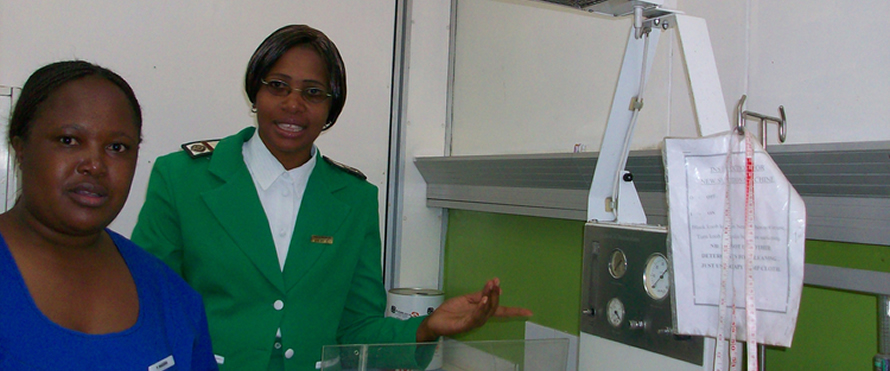
The Sunday Mail

 Harmony Agere
Harmony AgereSunday Mail Reporter
The Government is now ready to incorporate psychomotor skills training into the primary and secondary school curriculum following extensive consultations.
Last week, the Minister of State Responsible for Liaising on Psychomotor Activities in Education, Mr Josiah Hungwe, told The Sunday Mail Extra that his department and the two education ministries concluded consultations recently.
Psychomotor education refers to learning demonstrated through physical skills. Behavioural examples include driving a vehicle or playing a musical instrument.
This new arrangement will see schoolchildren receive vocational, technical and entrepreneurial lessons on top of academic learning.
The format is specifically tailored to equip students with business acumen as opposed to preparing them to eventually become employees.
Minister Hungwe said other stakeholders will soon view a draft framework after which the necessary alignments will be made.
“Psychomotor is about a balanced curriculum with vocational, technical and entrepreneurial activities availed to all learners from Early Childhood Development upwards. My department started by visiting institutions of learning that were involved in some psychomotor activities at school and tertiary level. From our interaction with school heads at ZITF (Zimbabwe International Trade Fair), they appeared to be thrilled with this new concept. An inventory of qualified personnel will have to be done and training of educators will be taken into account.
“It should be noted that due to the deficiency of the current system, qualified practical subject teachers from institutions like Belvedere Teachers’ Training College are being made to teach academic subjects.”
In 1999, a panel of experts that was commissioned to help refine the local education system recommended the introduction of psychomotor training after observing that learning was predominantly academic.
Seasoned educationist Dr Caiphas Nziramasanga headed the panel, which became popularly known as the Nziramasanga Commission and whose key recommendations are now being implemented by Government.
There are still concerns within Government that the available curriculum was crafted around the colonial F1 and F2 education system which primarily produced semi-skilled graduates for capitalist industries.
The African Union has also noted that the problem affects most parts of the continent and is now advocating entrepreneurial skills development via a 50-year plan known as Agenda 2063.
Dr Peter Kwaira, a lecturer in the University of Zimbabwe’s Department of Technical Education, supported the initiative. He, however, said it was important to realign teacher training with the new dispensation.
“The introduction of psychomotor activities in education is very noble. This is so because psychomotor skills come naturally. For example, when a baby is born, it is not taught to suckle on its mother, but it learns naturally.
“The same applies to a person talented in designing; such a student needs to learn theory to understand scientific designing. We already have a good teaching staff, but the teachers should be trained in line with new materials such as the Zim Asset (Zimbabwe Agenda for Sustainable Socio Economic Transformation) and harnessing diamonds.”
However, Education Coalition of Zimbabwe co-ordinator Mr Maxwell Rafomoyo said implementing psychomotor training was impractical.
“I do not like the use of the word psychomotor because I think we should be talking about vocational and technical learning instead.
“We have to go back to the Nziramasanga Commission, which advocates for basic education from primary to secondary level. It is at this stage (secondary) that students opt for either vocational and technical classes or academic or arts classes, depending on ability. Government came up with programmes such as the National Foundation Certificate, which was supposed to be the equivalent to the Zimbabwe Junior Certificate but it just died. I do not see it successfully implementing this one.”
The country requires 8 000 midwives, but only 4 422 are available, thus creating a serious crisis
Sharon Kavhu
Government hospitals and clinics have been hit by a serious shortage of midwives in a development that has seen health institutions fail to devote adequate attention to pregnant women.The country requires 8 000 midwives, but only 4 422 are available. The deficit became well pronounced after many of the healthcare providers migrated to greener pastures.
Fears now abound that the situation could lead to increased maternal mortality. Zimbabwe Nurses’ Association (ZNA) president Mrs Regina Smith said the country should immediately devise strategies to address the situation.
“Statistics from our sub-organisations show that the country requires a total of 8 000 midwives to attend deliveries in public health institutions and yet we only have 4 422.
“We have trained at least 6 500 midwives, but 2 078 are either in the private institutions or have left the country for greener pastures.” Mrs Smith said the ratio of midwives to expecting women was way below standard. As a result, she said, some of the patients are at times left unattended. The standard ratio of midwives to deliveries is 1:1 in the labour ward and 1:2 in the maternity ward. Mrs Smith said the present ratio stands at one midwife to 15 patients in the maternity ward and one midwife to five in the labour ward. “Ideally, midwives should only serve their main function; to improve accuracy and maintain quality care for pregnant women because no woman should die while giving birth,” she said.
Mrs Smith said most rural hospital and clinic maternity wards are being attended by primary care nurses and registered general nurses who are standing in for midwives.
Although Health and Child Care Minister Dr David Parirenyatwa could not be reached to comment on this particular matter, he recently revealed that the authorities were working to improve maternal healthcare.
A midwifery expert, who preferred anonymity, urged Government to recruit seasoned personnel to ease the situation.
The experts added that the authorities should investigate every maternal death to establish whether or not it was a result of a skills deficit.
The Zimbabwe Demographic Health Survey shows that the Maternal Mortality Rate (MMR) was at 283 deaths per 100 000 live births in 1994. In 2005 and 2006, it was estimated at 555 deaths per 100 000 live births.
In 2010 and 2011, the MMR shot to an estimated 960 deaths per 100 000 live births. The rate, however, slightly declined in 2012 and last year to 525 deaths per 100 000 live births.
“During my years of serving as a midwife, all midwives should have first served as general nurses for more than four years before taking any midwifery course,” said the expert.
“After training, they would practise as midwives under mentorship for two years before going into the field. This would help avoid situations where mothers die while giving birth due to unskilled maternal health personnel.
“Nowadays, a general nurse can be trained for midwifery and be employed as a midwife without mentorship”.



